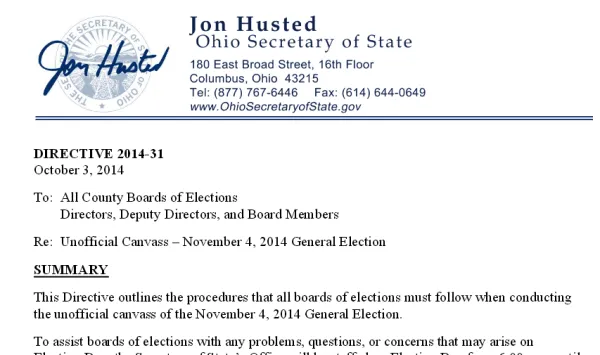OHIO RIGHTS GROUP – STILL ALIVE AND WELL

The Ohio Rights Group (ORG) proudly continues its mission of support for the medical, therapeutic and industrial uses of the cannabis plant in Ohio. The group still enthusiastically supports the Ohio Cannabis Rights Amendment (OCRA), which would codify those uses as patient rights into the Ohio constitution.
Although the number of signatures collected so far was insufficient to make the fall 2014 ballot, the proposed amendment remains viable and is still being circulated to gather the 301,105 signatures of registered Ohio voters now necessary for ballot placement. The total count for signatures was lowered from 385,247 following the recent gubernatorial election in which the turnout used to calculate this requirement was much lower than in 2010. The ORG has so far collected approximately 150,000 signatures for the OCRA, roughly one-third to one half of those required. The law governing ballot initiatives also mandates signatures from 44 counties of Ohio’s 88 counties to exceed 5 percent of that county’s gubernatorial vote. This benchmark has been met for 30 Ohio counties, or almost 70 percent of that requirement.
VERMONT NUKE SHUTDOWN SHOULD BE REPEATED AT OHIO'S DAVIS-BESSE

As Ohioans fight to shut the state's two dying reactors, good news has come from Vermont. Thanks to decades of dedicated activism, the Vermont Yankee reactor at Vernon was permanently shut down on Dec. 29, 2014.
Citizen activists made it happen. The number of licensed U.S. commercial reactors is now under 100 where once it was to be 1,000.
Years of hard grassroots campaigning by dedicated, non-violent nuclear opponents, working for a Solartopian green-powered economy, forced this reactor’s corporate owner to bring it down. Hopefully, the same can be done--SOON!---to the dangerous, decrepit reactors at Davis-Besse, near Toledo, and Perry east of Cleveland.
Ohio Inspector General Resists Investigating Massive Rigging of Workers’ Compensation Premium Rates

A two-part series in the Sept. and Oct. issues of The Free Press reported on the Ohio Bureau of Workers’ Compensation (BWC) setting employers’ insurance premiums illegally and unfairly for many years. The violations were revealed in the class-action lawsuit of San Allen v. Buehrer, in which Ohio’s 8th District Court of Appeals in May affirmed BWC’s liability to Ohio employers.
In November, the trial judge in the case, Richard McMonagle of the Cuyahoga County Court of Common Pleas, approved a $420 million settlement agreed to by BWC and the plaintiffs’ attorneys.
McMonagle had ruled in 2012 that BWC knowingly violated state law and acted unfairly in setting hundreds of thousands of Ohio employers’ workers’ compensation premium rates. The illegal rates were imposed on employers for over 15 years, until the lawsuit forced the agency to stop in 2009. BWC’s records submitted at trial indicated its conduct caused many thousands of employers to close due to shockingly high – and completely illegal – premium increases.
Die-In Protest for John Crawford III Shuts Down Beavercreek Walmart

On Saturday, Dec. 20, the usual holiday hustle at the Beavercreek Walmart was disrupted as nearly 200 protesters and activists took to the aisles to demand justice for the late John Crawford III, a 22-year old black man shot and killed by the local police department earlier this year.
The crowd first amassed in the pet department of the store, marking the spot where Crawford died. Once enough people gathered in the confined aisles, thus congesting the flow of shopping, Walmart management demanded all shoppers and protestors alike evacuate the store. For nearly two hours, all commerce came to a halt. The protesters remained.
Sierra Club Slams Ohio Utilities with More ‘No Coal Bailouts’ Advertising

COLUMBUS, Ohio -- As opposition grows against the sweeping coal plant bailout cases before the Public Utilities Commission of Ohio (PUCO), Sierra Club is blanketing the state again with new ads slamming state utilities for trying to prop up their outdated plants by increasing electricity costs on customers’ bills. Statewide radio ads, direct mail pieces, online ads and animated web gifs accompany a new suite of aggressive curbside kiosk ads in downtown Columbus. This new round of advertising will continue to hit the state throughout the holiday season.
Since August, the “No Coal Bailouts” campaign has garnered and submitted thousands of petitions to the PUCO. In October, a group of 12 Ohio businesses, including Lowe’s Home Improvement, Staples Inc. and Macy’s Inc., sent a letter urging regulators to reject the bailouts proposal. The businesses cited a new poll by Public Policy Partners showing a strong percentage of Ohio electricity customers favor clean, renewable energy sources to power the state -- and do not support paying more to keep aging coal plants in operation.
State of LGBT Equality in Ohio-based Companies Detailed in HRC’s New Corporate Equality Index
The Human Rights Campaign (HRC), the nation’s largest lesbian, gay, bisexual, and transgender (LGBT) civil rights organization, today released the 2015 Corporate Equality Index, an annual report assessing LGBT inclusion in major companies and law firms across the nation, including 26 in Ohio.
Corporate America, propelled by the HRC and its foundation’s annual Corporate Equality Index (CEI), has led the way on LGBT inclusion for more than a decade. As the national benchmarking tool on corporate policies and practices related to LGBT workplace equality, the 2015 CEI unveiled that a record 366 businesses – spanning nearly every industry and geography — earned a top score of 100 percent and the coveted distinction of “Best Places to Work for LGBT Equality.”
2014 Elections Roundup

THE GOOD
In a historical breakthrough, the U.S. Department of Justice appointed U.S. attorneys to investigate “election fraud” in Ohio and the nation.
In a surprise move a day prior to Election Day, U.S. Attorney Carter M. Stewart designated three election officials to investigate voter suppression and “election fraud’ in Ohio.
“It’s our duty to ensure that all qualified voters have the opportunity to cast their ballots and have their votes counted free of discrimination, intimidation, or fraud in the election process,” U.S. Attorney Stewart said.
Stewart’s press release specifically referenced “altering vote tallies” and “actions of persons designed to interrupt or intimidate voters at polling places by questioning or challenging them…”
“Both protecting the right to vote and combating election fraud are essential to maintaining the confidence of all Americans in our democratic system of government,” Stewart said. “We encourage anyone who has information suggesting voting discrimination or ballot fraud to contact the appropriate authorities.”
Ohio Secretary of State's office changes election night reporting requirements

On October 3, Ohio Secretary of State Jon Husted issued a directive that no longer requires county boards of elections to send precinct-by-precinct level data to his office in time-based increments on Election Day. The new requirement is to provide their county’s “summary results” only, instead of individual precinct-by-precinct data.
On October 2, the Columbus Free Press published an article entitled “What’s up with Ohio’s election night reporting system? Nobody really knows what happens on Election Day” by Bob Fitrakis and Gerry Bello. The article pointed out that an existing Ohio Secretary of State directive had very specific requirements for county boards of elections to send precinct-by-precinct data starting once their first precinct reported, and continuing on a time schedule of every 15 minutes, 30 minutes or by the hour.
Ohio Supreme Court decision DUI case is victory for defense attorneys and responsible drinkers

The Ohio Supreme Court’s recent unanimous decision allowing DUI defendants the right to challenge their breathalyzer test is a victory for adults who responsibly consume alcohol and never get behind the wheel when they have had too much, say local and state defense attorneys.
The Ohio Supreme Court ruled 7-0 affirming a lower court’s decision to deny prosecution a Cincinnati man’s breathalyzer test as evidence because the state of Ohio refused to hand over computer data showing the breathalyzer machine the man tested on – the Intoxilyzer 8000 – maybe unreliable and has accuracy issues.
While the case, City of Cincinnati vs. Daniel Ilg, is about challenging the Intoxilyzer 8000, it is equally about a defendant’s right for discovery of evidence.
Since 1984 a controversial Ohio Supreme Court decision, State vs. Vega, has denied any DUI defendant the right to challenge any state-certified breathalyzer machine they tested on, and the City of Cincinnati cited Vega when it refused to hand over the computer data to Daniel Ilg’s attorney.
Occupy the Police!

Dateline: Beavercreek, Ohio, 8:51pm October 6, 2014
At least 15 activists with the Ohio Student Association (OSA) are currently occupying the Beavercreek, Ohio police headquarters as of Monday, October 6, 2014. Their demand: Justice for John Crawford. In August, Crawford, a 22-year-old African-American man, was shot without warning in a local Walmart while holding an air rifle, ironically in a state that allows the open carry of A-Ks and other military assault weapons.
James Hayes, organizer with the OSA told the Free Press that, “We expect justice and we will push for justice on behalf of John Crawford.”
Hayes said the Student Association has posed three questions to Beavercreek Police Chief Dennis Evers:
1) What is the police force going to do about the officer who shot Crawford, Officer Sean Williams, who has killed two people in the past few years?
2) What is the police force going to do about the 911 caller Ronald Ritchie, who lied to the police, which led to the death of Crawford?
